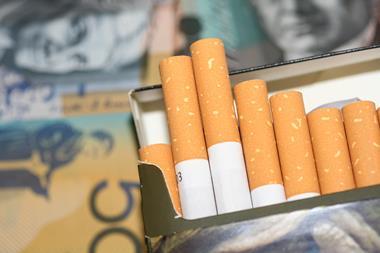The recent ban on Red 2G underscores the new level of scrutiny of food additives The European Food Safety Authority's (EFSA) decision to ban the food colouring Red 2G shows that food safety law in Europe is in a state of constant flux and development. Food manufacturers need to monitor developments closely if they are to avoid finding themselves at a competitive disadvantage. Red 2G has, until now, been used in small quantities for colouring economy sausages and burgers to make raw meat look fresher. The EFSA is working through data on other additives permitted under European law. It would not be surprising if others were banned too. The EFSA will base its approach on scientific evidence, but will be mindful of the shift in consumer perception in respect of substances with questionable nutritional value. The media has played an important role in encouraging consumers - and manufacturers - to switch to natural ingredients and organic food. However, coverage of food 'scares' can overstate the health risks. Recent reports that Red 2G has possible links to cancer were resonant of the dramatic headlines that accompanied the Sudan 1 and Para Red recalls. The regulators could also do more to inject balance into the debate. Public safety is paramount, but greater effort should be made to put the situation in context - for instance, making clear the volume of product that would have to be eaten to present a health risk. As part of its re-evaluation of permitted additives, the EFSA will consider sodium benzoate (E211), which is used as a preservative in carbonated soft drinks. There has been much publicity about the chemical reaction between sodium benzoate and ascorbic acids (present in some citrus-flavoured drinks) leading to detectable levels of benzene - a known carcinogen. However, the functional benefits of sodium benzoate should be taken into account as should possible alternative preservatives. Also, it's important to remember a consumer would need to drink hundreds of cans of drink to match the benzene ingested from taking a walk in a London park. 'Sunset yellow' dye, found in products such as orange squash, jams and packet soups, is another additive under the watchful eye of food watchdogs. The dye, which is thought to trigger hyperactivity, is banned in Norway and Finland but available in other parts of the EU. Asda is to ban artificial colours and flavours in its own label products and other retailers may follow suit. Developments in technology mean acceptable levels for contaminants are coming down, while detection levels are rising and new substances are being identified and tested for. This presents a challenge for manufacturers. When a new contaminant is identified and there are possible health risks, a product may be recalled to protect the brand before the health risks can be fully investigated. Manufacturers should protect themselves. They also need to check the adequacy of their insurance arrangements and make sure their technical teams are aware of technical developments and conduct audits on their suppliers. Harmonisation of food safety law across the EU remains an elusive goal, but the review may help to reduce some of the inconsistencies of approach. National regulators also need to work more closely together to promote a more uniform approach to the interpretation and enforcement of food legislation. Without this, many manufacturers in the UK may still feel they are at a disadvantage.n Richard Matthews is head of product liability at Eversheds LLP
Close menu
- Home
- Retail & Wholesale
-
Products & Suppliers
- Back to parent navigation item
- Products & Suppliers
-
Product Categories:
- Back to parent navigation item
- Product Categories:
- Alcoholic drinks
- Bakery
- Cereals & breakfast
- Cheese
- Chicken & poultry
- Chocolate
- Confectionery
- Crisps, nuts & snacks
- Dairy
- Fish
- Fresh produce
- Frozen
- Household
- Meat
- Own Label
- Sauces & condiments
- Seasonal
- Soft drinks
- Vaping
- Vegan & plant-based
- World foods
- Suppliers
- People
- Reports & Data
-
Topics A-Z
- Back to parent navigation item
- Topics A-Z
-
Popular topics:
- Back to parent navigation item
- Popular topics:
- Cost of living crisis
- Crime
- Deposit Return Schemes
- Finance
- Government & Regulation
- Health
- Inflation
- Loyalty
- Marketing
- Mergers & Acquisitions
- New Product Development
- Sourcing
- Supply chain
- Sustainability & environment
- Technology
- Ultra Processed Foods
- Vaping
- A-Z all topics
- Content by type:
- Events
- Ask iA (beta)
- Subscribe now
Sign in to comment on this article
Not logged in before? Register for FREE guest access today.
You will be able to:
- Read more stories
- Receive daily newsletters
- Comment on stories
Advert














No comments yet